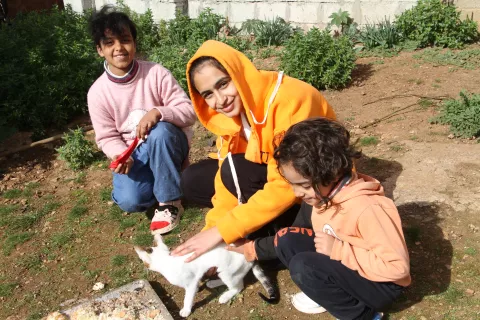World Water Day: World’s poorest have least access to safe water – UNICEF
1,400 children under five die each day from causes linked to lack of safe water, sanitation, and hygiene
NEW YORK, 21 March 2014 – Almost four years after the world met the global target set in the Millennium Development Goals (MDGs) for safe drinking water, and after the UN General Assembly declared that water was a human right, over three-quarters of a billion people, most of them poor, still do not have this basic necessity, UNICEF said to mark World Water Day.
Estimates from UNICEF and WHO published in 2013 are that a staggering 768 million people do not have access to safe drinking water, causing hundreds of thousands of children to sicken and die each year. Most of the people without access are poor and live in remote rural areas or urban slums.
UNICEF estimates that 1,400 children under five die every day from diarrhoeal diseases linked to lack of safe water and adequate sanitation and hygiene.
“Every child, rich or poor, has the right to survive, the right to health, the right to a future,” said Sanjay Wijesekera, head of UNICEF's global water, sanitation and hygiene programmes. “The world should not rest until every single man, woman and child has the water and sanitation that is theirs as a human right.”
The MDG target for drinking water was met and passed in 2010, when 89 per cent of the global population had access to improved sources of drinking water — such as piped supplies, boreholes fitted with pumps, and protected wells. Also in 2010, the UN General Assembly recognized safe drinking water and sanitation as a human right, meaning every person should have access to safe water and basic sanitation. However, this basic right continues to be denied to the poorest people across the world.
“What continues to be striking, and maybe even shocking, is that even in middle income countries there are millions of poor people who do not have safe water to drink,” Wijesekera added. “We must target the marginalized and often forgotten groups: those who are the most difficult to reach, the poorest and the most disadvantaged.”
According to UNICEF and WHO estimates, 10 countries are home to almost two-thirds of the global population without access to improved drinking water sources. They are: China (108 million); India (99 million); Nigeria (63 million); Ethiopia (43 million); Indonesia (39 million); Democratic Republic of the Congo (37 million); Bangladesh (26 million); United Republic of Tanzania (22 million); Kenya (16 million) and Pakistan (16 million).
UNICEF says women and girls are disproportionately affected by lack of access to safe water. An estimated 71 per cent of the burden of drinking water collection is being shouldered by women and girls.
UNICEF WASH programming is taking place in over 100 countries, and new initiatives such as cost-effective drilling and community-based water safety planning are bringing safe water to families living in some of the most isolated regions. UNICEF has, for example, used hand-dug boreholes in Pakistan to supply safe water to around 100,000 people since 2012. UNICEF-supported ‘WASH in Schools’ programming has brought safe water, sanitation and hygiene facilities to millions of school children around the world.
This week, UNICEF launched a global social media campaign to demand action for the 768 million people without access to safe water. Followers on Facebook, Twitter and Instagram will be asked to discuss what water means to them through the use of photography and the hashtag #WaterIs to help raise awareness of what it means to live without access to safe drinking water.
###
Download multimedia content at: http://weshare.unicef.org/mediaresources
For further information please contact:
Rita Ann Wallace, UNICEF New York, Tel: 1 212-326-7586, Mobile: 1 917-213-4034, rwallace@unicef.org
Media contacts
About UNICEF
UNICEF promotes the rights and wellbeing of every child, in everything we do. Together with our partners, we work in 190 countries and territories to translate that commitment into practical action, focusing special effort on reaching the most vulnerable and excluded children, to the benefit of all children, everywhere.
For more information about UNICEF and its work for children, visit www.unicef.org.




